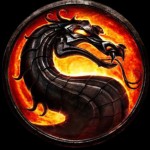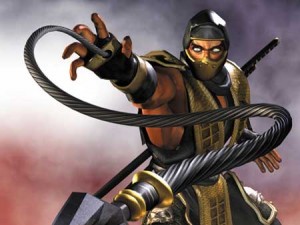
Episode #3: The Blade Runner special!
Popcorn Junkie: Blade Runner
War Room: Is Deckard a Replicant?
Download
(right click and select Save File As)

Episode #3: The Blade Runner special!
Popcorn Junkie: Blade Runner
War Room: Is Deckard a Replicant?
Download
(right click and select Save File As)
Here at NCP we are always ready to encourage up and coming film makers and when a friend of mine told me about her son’s new short film I was more than happy to post it here. Introducing,
Platform 3 by Jarrod Grech
You can also check out Jarrod’s Youtube channel – JarrodsCamera
Nerd Culture Podcast are proud to introduce our newest NCP crewmember – Miztres! Fans of the show will know her as the author of the feedback we read out in episode #2. In that ep I mentioned having her on the show and she has leapt at the chance! Being interstate an appearance on the show is unlikely, but she was eager to contribute to the site, so here she is with her first (of hopefully many) piece. Take it away Miztres…..
Role-playing is an integral symbol of nerd culture. A nerd could almost be defined by their devotion to a role-playing game either paper or online. Though one is superficially the online version of the other, by the nature of their media, playing MMORPG and paper-based D&D are different experiences.
Unlike pen and paper gaming, anytime or anywhere you have sufficient Internet access you can go on a quest and fight for the right (or treasure) in a MMORPG. Paper D&D does require the participant to make the time to come together, but in so doing D&D becomes an event, a chance to share telling a story.
Paper D&D participants all have a part to play in the story guided by the DM (Dungeon Master). With a flexible DM and thoughtful members a D&D game moves the story beyond the confines of the module. Online you are directed through a predetermined path with no way of manipulating the story beyond what has already been determined by the programmer. Your character’s decisions mean little or anything beyond the quest.
If none of your character’s choices matter, MMOPRG becomes the acquisition of some goal, advancement or treasure. With limited scope beyond a few emotes for expressing emotions online RPG is gaming Valhalla, a continual battlefield on which your can show your worth. Paper based gaming is more about role-playing your character. A good DM will even give experience points to participants who express their characters strengths and weaknesses to the full.
An example of this character expression is through alignment. In Dungeons and Dragons Online (DDO), a MMORPG that is based on the D&D 3rd edition rules, alignment is almost a secondary consideration. Some weapons are aligned (e.g. a chaotic character could not use a lawful weapon) but there is no penalty or benefit for choice of alignment. Alignment in paper based D&D is far more important especially for those classes under the ethos of a god. Role-playing a Paladin outside of the lawful good alignment will anger the character’s chosen god and permanently strip them of all the benefits of its class.
Regardless of media, RPG is a group activity. Though online you can complete quests alone it is only in a guild or working at quests as a team that a player can really appreciate all aspects of the game. Although the classic Fighting Fantasy novels did allow readers to role-play alone, the greatest strength of paper based D&D is missing, being a participant in a group and telling your own story. It is, as with most things in life, by playing together that the most exciting, rewarding fun can be had.
For more information on Dungeons & Dragons Online go to – www.ddo.com
For more information on pen & paper Dungeons & Dragons go to – www.wizards.com/DnD/

 When a friend of mine announced that he was bringing over his copy of the new Mortal Kombat game for me to borrow I was shocked. Not at his generosity (he’s that type of guy) but at his brazenness. For those of you reading this and thinking, ‘What the hell is this going on about?’, let me explain.
When a friend of mine announced that he was bringing over his copy of the new Mortal Kombat game for me to borrow I was shocked. Not at his generosity (he’s that type of guy) but at his brazenness. For those of you reading this and thinking, ‘What the hell is this going on about?’, let me explain.
In yet another example of the ridiculousness of the Australian classification system and lack of an R18+ rating for games, Mortal Kombat was ‘refused classification’, making it illegal to sell, or even own a copy of it, in this country. Pretty stupid right? It’s not like we’re talking Mein Kampf here (although that is available…..). What makes it even more galling is that it was banned for the following:
“At the conclusion of a bout, a character is invited to perform a ‘fatality’. If this is successfully accomplished, a non-interactive cut scene is triggered which depicts a character explicitly slaughtering their opponent.
The game includes over 60 fatalities which contain explicit depictions of dismemberment, decapitation, disembowelment and other brutal forms of slaughter. Despite the exaggerated conceptual nature of the fatalities and their context within a fighting game set in a fantasy realm, impact is heightened by the use of graphics which are realistically rendered and very detailed. In the opinion of the Board, the game contains violence that exceeds strong in impact and is unsuitable for a minor to see or play. The game should therefore be Refused Classification pursuant to item 1(d) of the computer games table of the National Classification Board.”
Fatalities have been a staple of Mortal Kombat since the beginning and every iteration since. None of them were banned. But apparently it’s not the violence that has them concerned. It is more the realistically rendered level of detail of the graphics that is the problem. Well that explains why violent games with cartoony graphics like Splatterhouse can still be released, but what about Bulletstorm, with its kill with style combos that almost always involve dismemberment of some sort, or Aliens vs Predator, which feature the Predators taking trophies of human skulls and spines?
Warner Bros. unsuccessfully appealed the decision to the Classification Review Board, who ruled “the impact of the violence in Mortal Kombat is higher than strong and thus could not be accommodated within the MA15+ classification”
Now, to be fair, it’s not entirely their fault. Their hands are tied by the lack of an R18+ rating, but can we at least have consistency! Just how realistic do the graphics have to be? In Bulletstorn I can lob a grenade that blows my opponent into assorted body parts. In Mortal Kombat I can punch into my opponents chest, freeze their heart and then slam them in the face with it. Which one of these is more likely to be copied in ‘real life’?
Anyway, despite my opinions (as valuable as they are), Mortal Kombat remains banned in Australia and it is a real shame because this is definitely the best entry in the series since my personal favourite – Ultimate Mortal Kombat 3. (Memory Lane Sidenote: I once beat the arcade version of UMK3 blindfolded. I don’t know whether to be proud or ashamed).
Much like the recent Star Trek movie, Mortal Kombat (chronologically it is #9) is a reboot of the MK universe, with a welcome return to the 2D style of fighting from the earlier days of the series. No more sidestepping and stupidly endless circling of the opponent, bliss. The graphics are still rendered in 3D, using the same modified Unreal engine they used for Mortal Kombat vs DC Universe, but have managed to lose the weird plastic look all the combatants had in that game. They really are well done and are used to great effect to bring the characters to life during Story Mode and for the Fatalities and X-Ray mode during combat.
Each combatant has a power meter that can be charged by various actions during the fight in order to power up special attacks and activate X-Ray mode. During this attack, an internal view of the victim character is shown with bones and organs being broken from attacks, doing around 30% damage (50% for bosses!). It is very cool, but unfortunately isn’t a guaranteed hit so it is still possible to use up all of your hard earned power for nothing, and after the first few times the novelty factor is lost.
There are a plethora of additional modes, including the standards like Arcade, Versus, Training, & Online, as well as the Challenge Tower, the Krypt, Story, Tag Team VS & more. I didn’t get enough time to try all of them before my friend cruelly deprived me of the disc, however I did manage to complete Story Mode and get a fair way into the Challenge Tower.
The Challenge Tower mode is a single-player option that includes 300 challenges of various difficulties providing Kombat Koin rewards upon completion. Amongst the various challenges are the classic ‘Test Your Might’, as well as new variations like, ‘Test Your Sight’ (finding an object hidden under shuffled cups or skulls), ‘Test Your Strike’ (destroying a specific block in a stack), and ‘Test Your Luck’ (battles with certain conditions/limitations). It is a lot of fun, and apparently has a bonus after the 300th level.
I briefly dabbled with the online mode game ‘King of the Hill’ option, where up to eight players can act as spectators and play the winner of a fight. Spectators may also rate the fights. The netcode appeared quite good, and although I did experience a bit of lag, it wasn’t too detrimental.
I also spent some of my Kombat Koins in the Krypt but it seems for the die-hard fans only, with the majority of items appearing to be development artwork and other behind the scenes items. I would prefer if it worked more like a store, in which you could select the items you wanted.
However, most of my time was taken up with the awesome Story mode. A well written story, motion captured ‘acting’, apparently ban worthy graphics, and the chance to play as multiple characters during the course of the story, all combine to create the most enjoyable Story mode I have ever played in a fighting game. I’m a sucker for alternate reality stories and this one doesn’t disappoint.
………………SPOILERS AHEAD……………….
Legendary comic artist Gene Colan has passed away, from complications following a broken hip and liver disease. He was 84.
Colan had nearly 70 years of experience in the comic book industry, and is perhaps best known for his seven-year run on Daredevil (1966 – 1973) and all 70 issues of Marvel’s horror series The Tomb of Dracula in the 1970s. In 1969, Colan and Stan Lee created the Falcon, the first African-American superhero in mainstream comics.
He also worked for DC Comics, including multiple issues of both Batman and Detective Comics.
Despite ailing health, Colan remained active late in his career. In 1997, he returned to Daredevil for an eight issue run and last year he won the Eisner Award for Best Single Issue along with writer Ed Brubaker for Captain America #601, his last published work.
Mr Colan was a 2005 inductee into the Will Eisner Comic Book Hall of Fame.
Rest in peace Mr Colan.